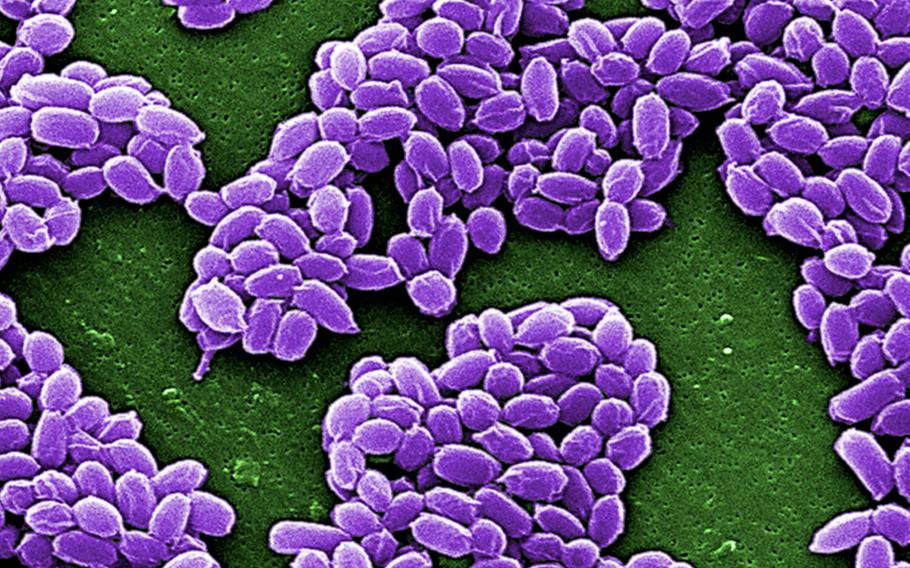
Under a high magnification of 12,483X, this scanning electron micrograph depicted spores from the Sterne strain of anthrax bacteria. (Laura Rose/CDC)
A report released Thursday blames inadequate irradiation and testing procedures for Department of Defense labs inadvertently sending live anthrax to dozens of labs around the world over the past decade, though it does not hold anyone accountable for the embarrassing lapses.
“By any measure, this was a massive institutional failure with a potentially dangerous biotoxin,” Deputy Secretary of Defense Robert Work said in a media briefing Thursday. “We are shocked by these failures. DOD takes full responsibility for the failures.”
The investigation was initially triggered by a sample sent from the Army’s Dugway Proving Ground in Utah in April, but subsequent testing found that live anthrax had been sent to 86 facilities across the country and in seven foreign countries. Work said that number is likely to rise, because some samples that were sent to third-party labs have not been tracked down.
Dugway is the Department of Defense’s main production laboratory for anthrax.
While the report does not hold anyone accountable, there were alarming indications — including a high percentage of supposedly irradiated anthrax testing positive for live spores in the labs' own checks — that the Dugway leadership should have noticed, and the Army is investigating whether anyone needs to be punished, Undersecretary of Defense Frank Kendall said.
“That should have been a clear indication to them that something was wrong,” he said.
No one was sickened, but eight lab workers who came in contact with the spores were put on medication as a precaution, and the Centers for Disease Control recommended that three laboratories be temporarily closed for decontamination.
The Pentagon then issued a moratorium on facilities sending anthrax samples, which will continue until new protocols are developed, Work said
The report says staff appear to have correctly followed their own inadequate protocols but seems to assign blame for the inadequate procedures on the greater scientific community’s lack of consistent standards for handling anthrax and the difficulty of killing the pathogen.
“A key finding by the committee is that there is insufficient technical information in the broader scientific community to guide the development of thoroughly effective protocols for inactivation of spores and viability testing of BA,” the report says.
Work says he hopes the Defense Department’s new standards will lead to a nationwide standard in the handling and production of anthrax.
The Daily Beast first reported the findings of the report, and that story includes a scientist who said that even the inconsistent standards, when followed, are enough to ensure anthrax would be killed before reaching customers.
As the report notes, anthrax is particularly hard to kill, and it appears that lab workers may have used too little radiation in their attempts to inactivate the pathogen. Lab staff also used the same equipment for live and inactivated anthrax, which posed a cross-contamination threat, according to the report.
The Defense Department’s work on anthrax is primarily done at four sites, Dugway in Utah, and three Maryland labs: the Army Edgewood Chemical Biological Center, the United States Army Medical Research Institute of Infectious Diseases and the Naval Medical Research Center. Dugway appears to be the only lab that sent live anthrax.
All of the labs had different protocols for handling anthrax, which is one of the factors cited by the report as likely contributing to the mistakes.
“It is prudent that the Army, Navy and Office of the Secretary of Defense review the chain of command and pursue consistent safety practices,” the report says.
Growing anthrax in government labs is part of a defense program designed to protect Americans against biological attacks, spurred in part by anthrax letter attacks in 2001 that killed five people and sickened more than a dozen others. An investigation focused on a government scientist, though he killed himself before he was charged in the crimes.
druzin.heath@stripes.com Twitter: @Druzin_Stripes